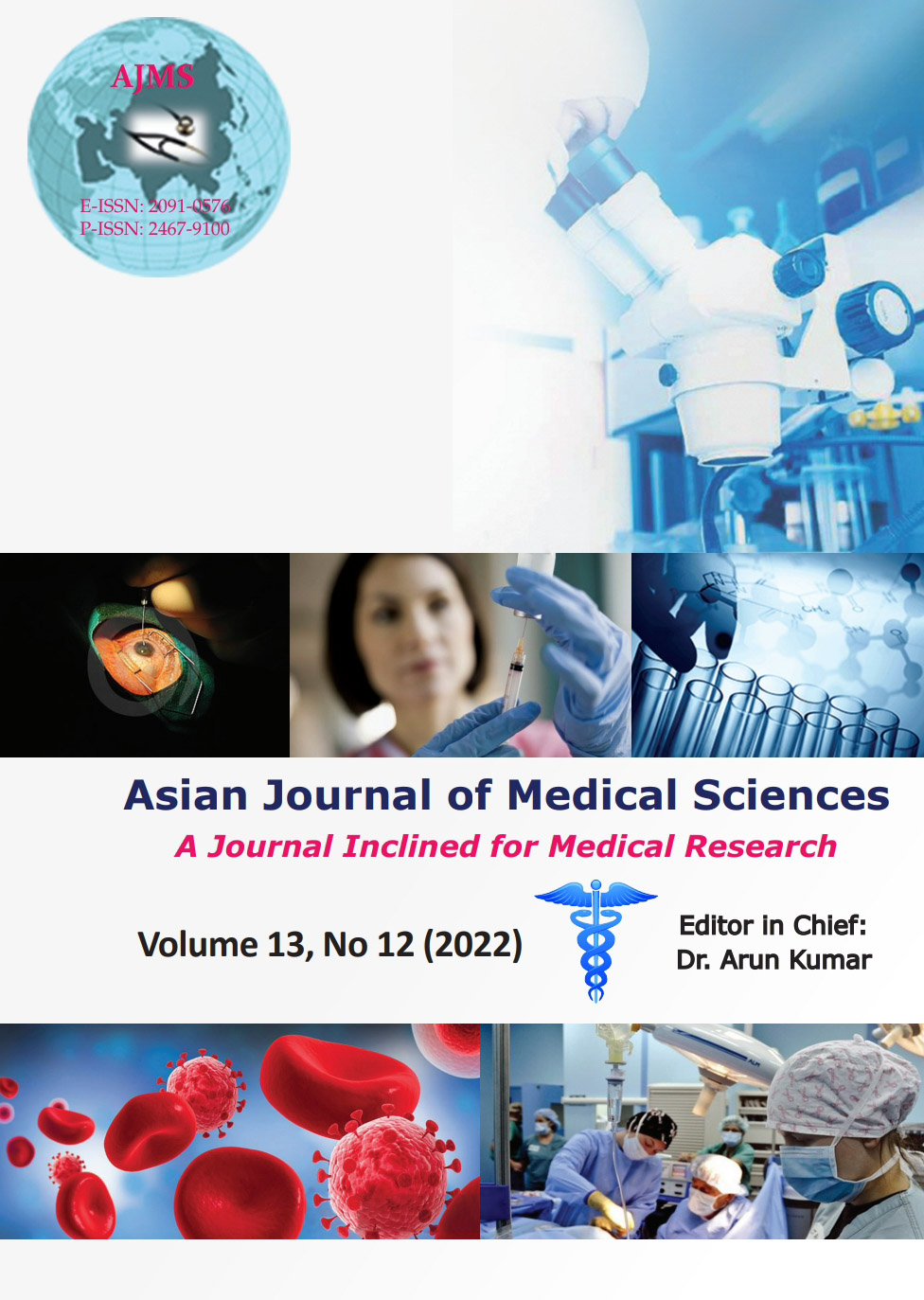Assessment of Vitamin D3 level in patients of rheumatoid arthritis and its relationship with disease activity using DAS 28-CRP in tertiary care center of Bihar, India
Keywords:
Rheumatoid arthritis; Vitamin D3; C-reactive protein, DAS28; ROC curveAbstract
Background: Rheumatoid arthritis (RA) is most common type of inflammatory arthritis. It is chronic autoimmune disease that affects joints as well as extra-articular structures. The prevalence of this condition could be due to both genetic and non-genetic factors (e.g., environmental, viral, and hormonal).
Aims and Objectives: The aim of the study was to determine and correlate 25(OH) D level with disease severity in patients of RA.
Materials and Methods: The prospective observational study consists of 70 patients of RA and 70 healthy controls. Assessed level of 25(OH) D, C-reactive protein (CRP), anti-cyclic citrullinated peptide (CCP), erythrocyte sedimentation rate (ESR), and Disease Activity Score (DAS) 28-CRP score were compared in both cases and controls. Correlation of Vitamin D level with parameters such as CRP, Anti-CCP, and ESR was performed. Correlation between Vitamin D level deficiency and disease activity among the RA patients was assessed.
Results: The mean age of patients in the RA group was 37.77±13.31 years. The mean CRP in cases was 40.57±25.94 mg/L and in controls was 3.26±1.95 mg/L with significant intergroup difference (P<0.001). The mean anti-CCP in cases was 62.18±27.21 U/mL and in controls was 4.99±1.52 U/mL with significant intergroup difference (P<0.001). The mean 25(OH) D level in cases was 12.65±5.88 and in controls was 32.18±10.22. The 25(OH) D was significantly decreased in cases than controls (P<0.001). A significant inverse relationship between serum 25(OH) D levels and DAS28 was observed. Receiver operating characteristic (ROC) curves results showed that 25(OH) D<11.7 ng/mL indicates severe disease activity (Area under ROC curve=84%, Sensitivity 77.78%, and specificity 83.33%,). 25(OH) D between 11.7 ng/mL and 19.83 ng/mL indicates moderate disease activity. 25(OH) D˃19.83 ng/mL indicates low disease activity value below 4.13 is alarming situation.
Conclusion: The study reveals high prevalence of Vitamin D deficiency and insufficiency in RA patients. There is also significant inverse correlation exist between serum Vitamin D levels and RA disease activity. Vitamin D level is good disease activity predictor in patients of RA.
Downloads
Downloads
Published
How to Cite
Issue
Section
License
Copyright (c) 2022 Asian Journal of Medical Sciences

This work is licensed under a Creative Commons Attribution-NonCommercial 4.0 International License.
Authors who publish with this journal agree to the following terms:
- The journal holds copyright and publishes the work under a Creative Commons CC-BY-NC license that permits use, distribution and reprduction in any medium, provided the original work is properly cited and is not used for commercial purposes. The journal should be recognised as the original publisher of this work.
- Authors are able to enter into separate, additional contractual arrangements for the non-exclusive distribution of the journal's published version of the work (e.g., post it to an institutional repository or publish it in a book), with an acknowledgement of its initial publication in this journal.
- Authors are permitted and encouraged to post their work online (e.g., in institutional repositories or on their website) prior to and during the submission process, as it can lead to productive exchanges, as well as earlier and greater citation of published work (See The Effect of Open Access).




